SRSD: 40+ Years of Research and Success

Welcome to Dr. Karen Harris’ in-depth SRSD presentation, a valuable resource designed to enhance educators’ understanding of SRSD writing and learning strategies.
We are thrilled to offer this video series in which Karen Harris, the creator of SRSD, shares evidence-based techniques and insights gained from years of research and collaboration with her colleagues. Each chapter covers essential elements of SRSD writing instruction, from tackling the challenges of developing proficient writing skills to applying SRSD strategies across diverse classroom environments. Over one hour of videos include practical examples, detailed instructional methods, before and after results, and inspiring student success stories. Karen envisions a world where all educators have the tools to improve their teaching and empower students to become confident, capable writers.
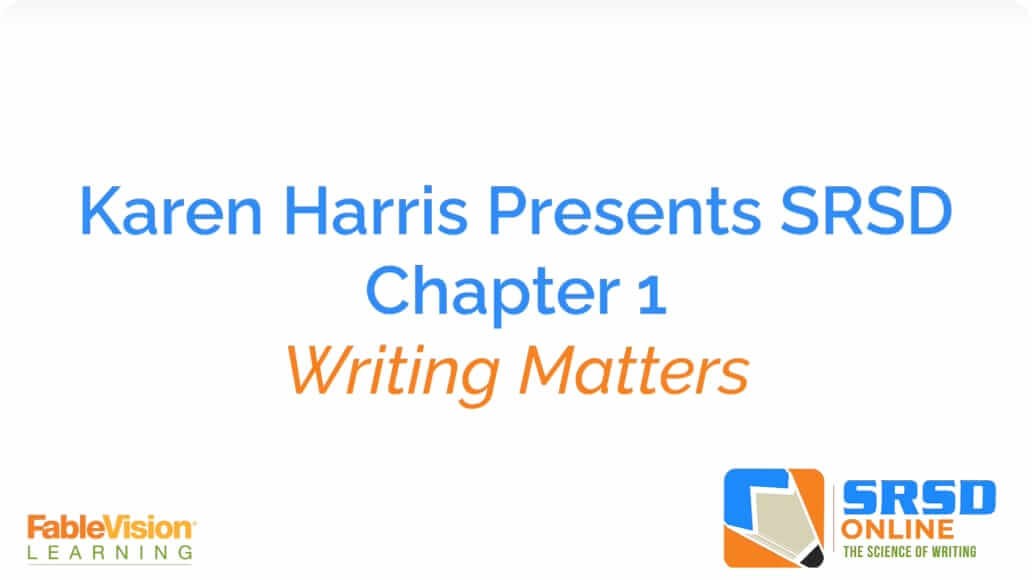
Chapter 1: Writing Matters
“Writing Matters” highlights the significance of empowering teachers and students with effective, evidence-based writing strategies and the critical role writing plays in academic success, career readiness, and personal development. Additionally, Karen discusses...
“Writing Matters” highlights the significance of empowering teachers and students with effective, evidence-based writing strategies and the critical role writing plays in academic success, career readiness, and personal development. Additionally, Karen discusses the current challenges in writing education and offers researched solutions to enhance student writing skills and outcomes.
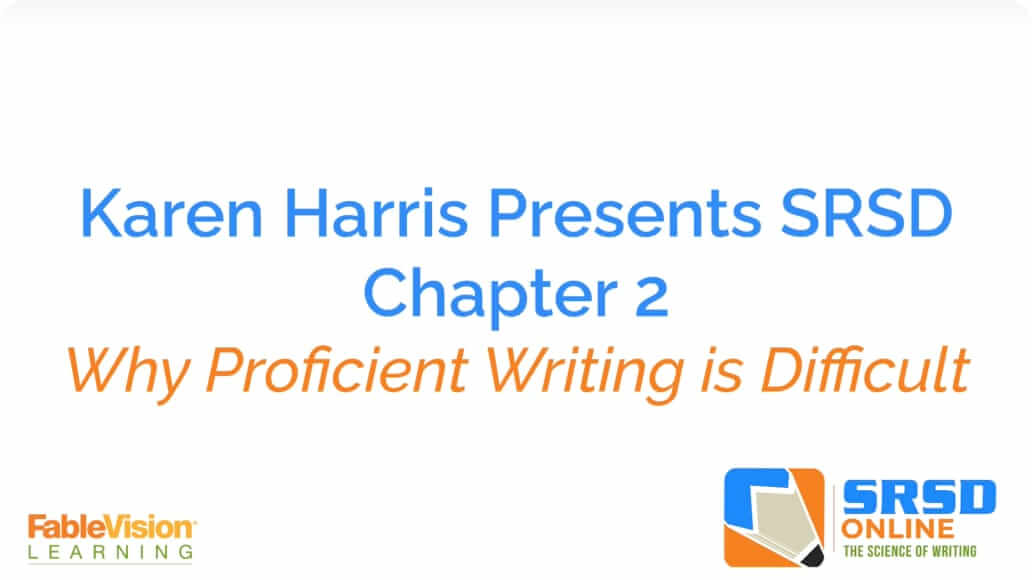
Chapter 2: Why Proficient Writing Is Difficult
“Why Proficient Writing is Difficult” explores the complexities of skilled writing and the self-regulation required to master it, as well as why teaching writing is a demanding task for educators. Karen emphasizes...
“Why Proficient Writing is Difficult” explores the complexities of skilled writing and the self-regulation required to master it, as well as why teaching writing is a demanding task for educators. Karen emphasizes the importance of providing structured support to students, likening the process to conducting the various instruments in an orchestra, where understanding multiple elements and strategies is crucial for success. She also dispels the myth that writing develops naturally, underscoring the necessity of deliberate and systematic instruction to help students become proficient writers.
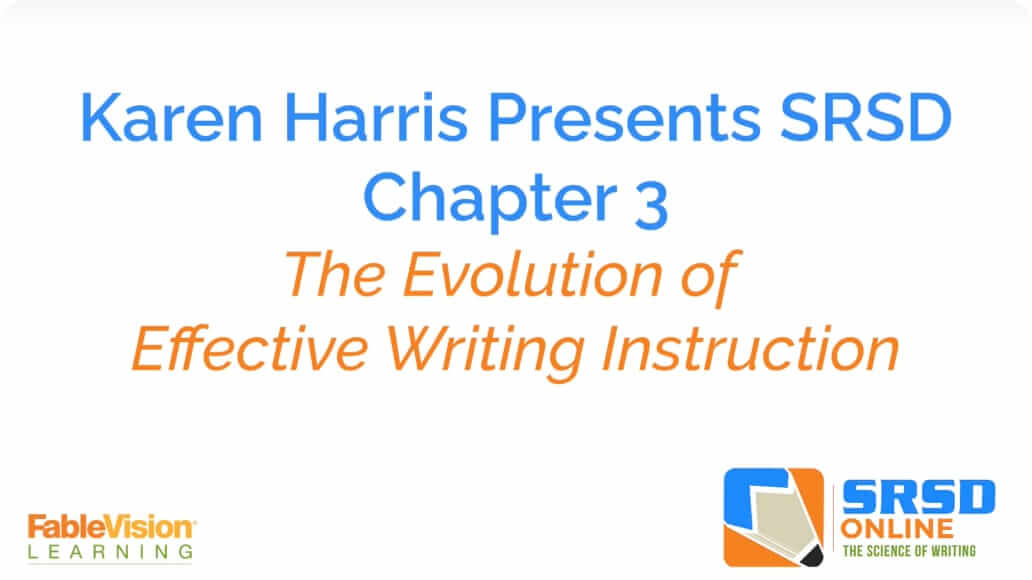
Chapter 3: The Evolution of Effective Writing Instruction
“The Evolution of Effective Writing Instruction” discusses the significant advancements in writing instruction over the past decades. Here, Karen describes the shift from a product-oriented model to one that emphasizes interactive learning,...
“The Evolution of Effective Writing Instruction” discusses the significant advancements in writing instruction over the past decades. Here, Karen describes the shift from a product-oriented model to one that emphasizes interactive learning, focusing on the meaning of writing rather than just marking errors. She also underscores the importance of creating a writing community in the classroom, integrating writing across the curriculum, and developing essential writing skills through meaningful activities while recognizing the need for differentiation.
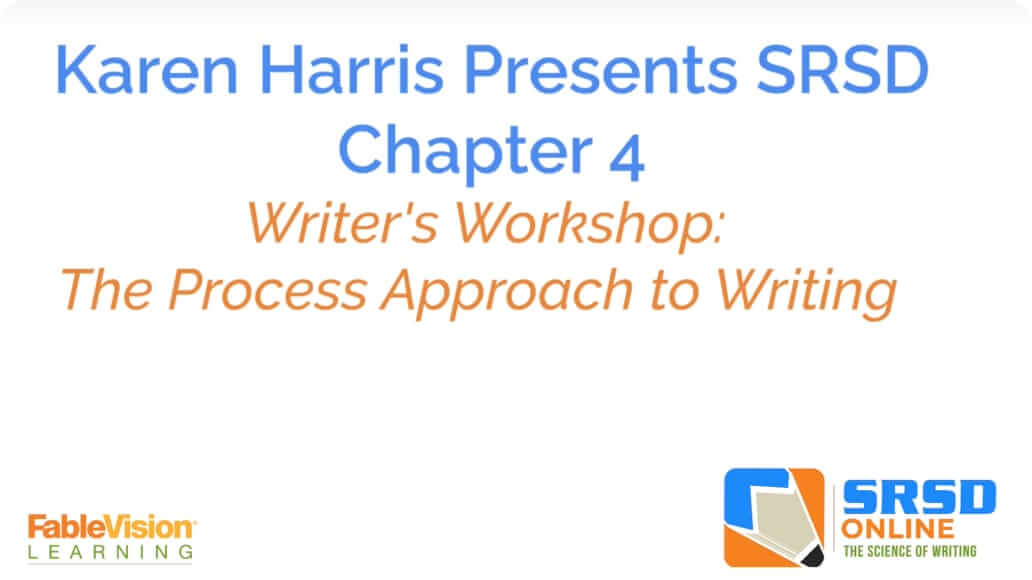
Chapter 4: Writer's Workshop and the Process Approach to Writing
In “Writer’s Workshop: The Process Approach to Writing,” Karen Harris reflects on the research and success of SRSD compared to the Writer’s Workshop (process approach) to teaching writing, noting that Writer’s Workshop...
In “Writer’s Workshop: The Process Approach to Writing,” Karen Harris reflects on the research and success of SRSD compared to the Writer’s Workshop (process approach) to teaching writing, noting that Writer’s Workshop alone is not very effective without considerable professional development for teachers. Even then, the impact remains modest, particularly for struggling writers who show little improvement. She emphasizes the need to consider SRSD, which is evidence-based, to enhance development and instruction to counter the high number of students reaching high school and college without the necessary writing skills.
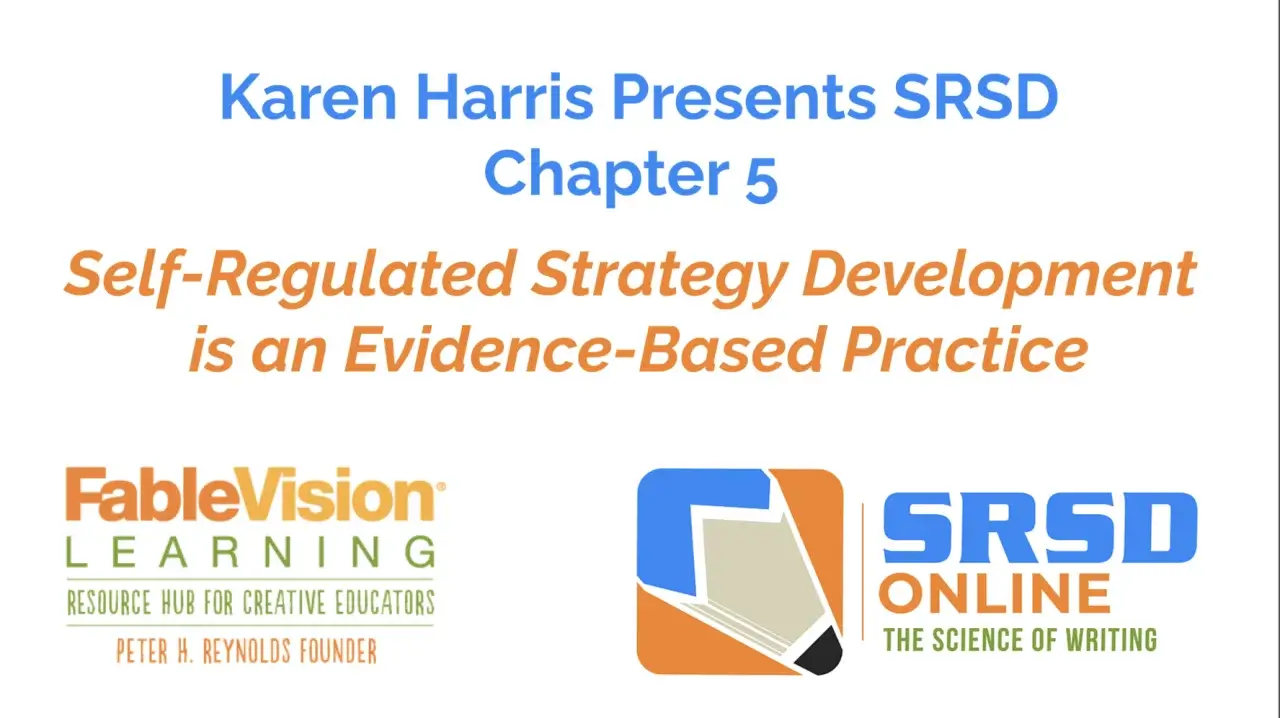
Chapter 5: SRSD Is an Evidence-Based Practice
“SRSD is an Evidence-Based Practice” discusses SRSD’s proven effectiveness in improving student writing outcomes and that SRSD has been validated by over 100 studies across more than 10 countries, earning the highest...
“SRSD is an Evidence-Based Practice” discusses SRSD’s proven effectiveness in improving student writing outcomes and that SRSD has been validated by over 100 studies across more than 10 countries, earning the highest rating of ‘strong evidence’ for enhancing writing skills for K-12 students. Karen explains that SRSD significantly changes how students write and their attitudes towards writing, which creates long-term retention and generalization of skills. Additionally, she clarifies that SRSD can be integrated successfully with other instructional approaches and curricula, making SRSD a powerful component of comprehensive writing instruction.
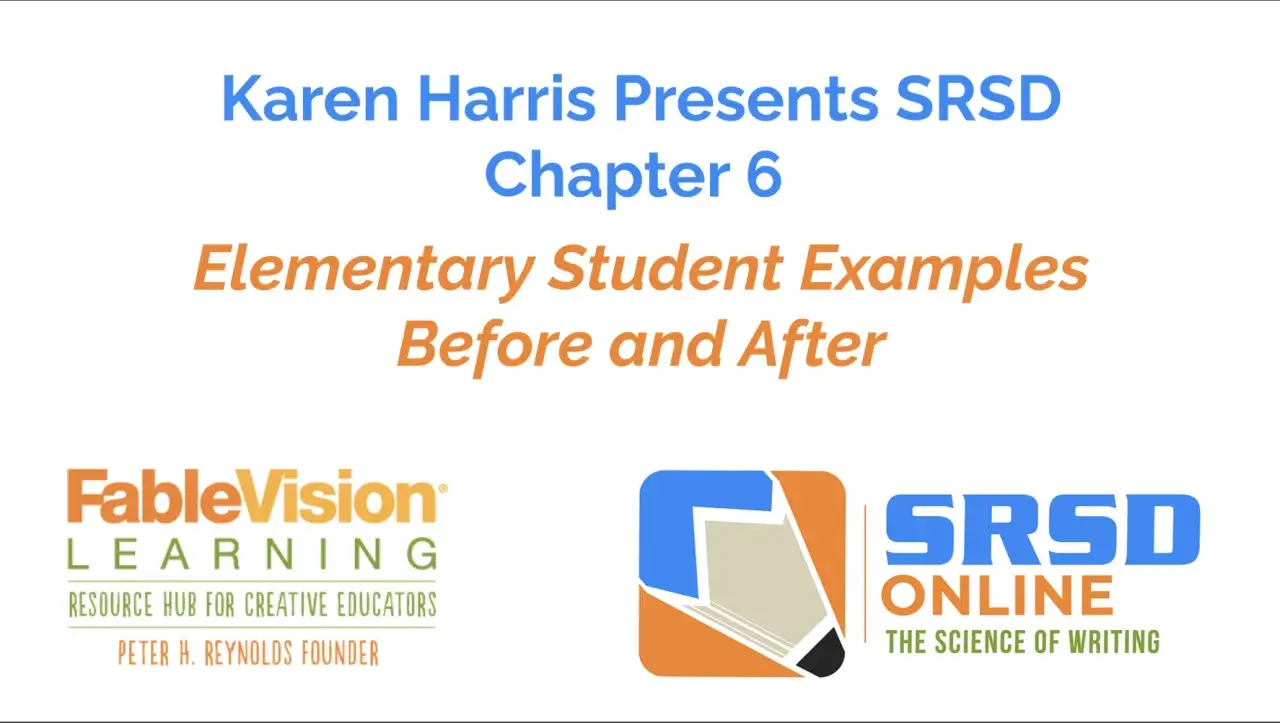
Chapter 6: Elementary Student Examples: Before and After
“Elementary Student Examples: Before and After” showcases the transformative impact of SRSD instruction on students’ writing abilities through real examples. Karen presents Sarah, a typical second grader, and Paige, a fourth grader...
“Elementary Student Examples: Before and After” showcases the transformative impact of SRSD instruction on students’ writing abilities through real examples. Karen presents Sarah, a typical second grader, and Paige, a fourth grader with a learning disability, demonstrating their progress before and after SRSD instruction. Sarah’s initial response to a writing prompt was simple, but after SRSD instruction, she wrote a more structured and persuasive essay independently. Similarly, Paige’s writing improved significantly, showing clear opinions and reasons after SRSD lessons, which boosted her confidence and belief in her ability to write effectively.
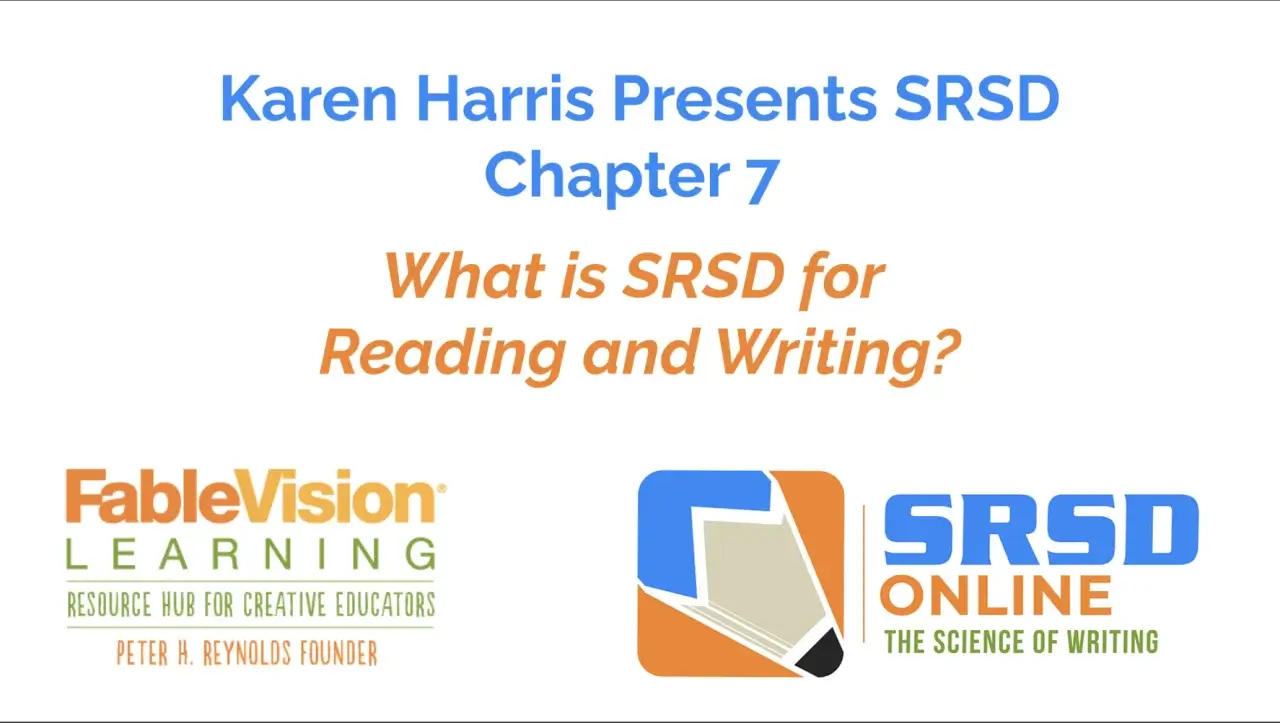
Chapter 7: What Is SRSD for Reading and Writing?
“What is SRSD for Reading and Writing?” delves into the essentials of SRSD and its structured approach to teaching writing. Karen explains that SRSD starts with reading, using mentor texts at the...
“What is SRSD for Reading and Writing?” delves into the essentials of SRSD and its structured approach to teaching writing. Karen explains that SRSD starts with reading, using mentor texts at the child’s reading level to provide effective models and that SRSD emphasizes interactive and explicit learning of writing strategies, incorporating cognitive and collaborative modeling and self-regulation techniques like goal setting and self-assessment. She also notes that SRSD is student-centered but teacher-driven, allowing for differentiation to meet diverse student needs, and is framed within six flexible, interactive stages to guide instruction and support students in becoming independent writers.
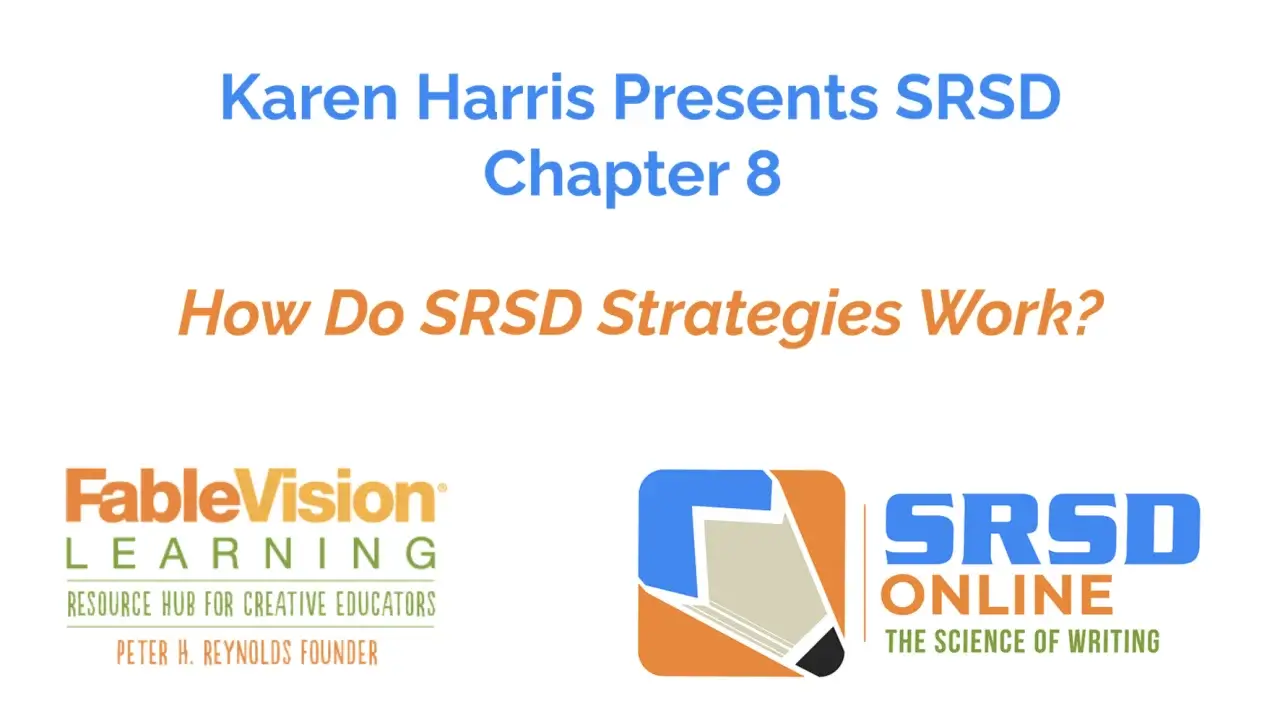
Chapter 8: How Do SRSD Strategies Work?
In “How Do SRSD Strategies Work?” Karen explains what Sarah and Paige learned about opinion essay writing in second and fourth grades through SRSD instruction. They used the mnemonic POW to understand...
In “How Do SRSD Strategies Work?” Karen explains what Sarah and Paige learned about opinion essay writing in second and fourth grades through SRSD instruction. They used the mnemonic POW to understand key aspects of the writing process: P for picking their idea, O for organizing their notes, and W for writing and saying more. Karen emphasizes the importance of making effective and efficient notes and that struggling writers often resist note-taking, while typically achieving writers tend to over-write notes, which limits their flexibility during the final draft.
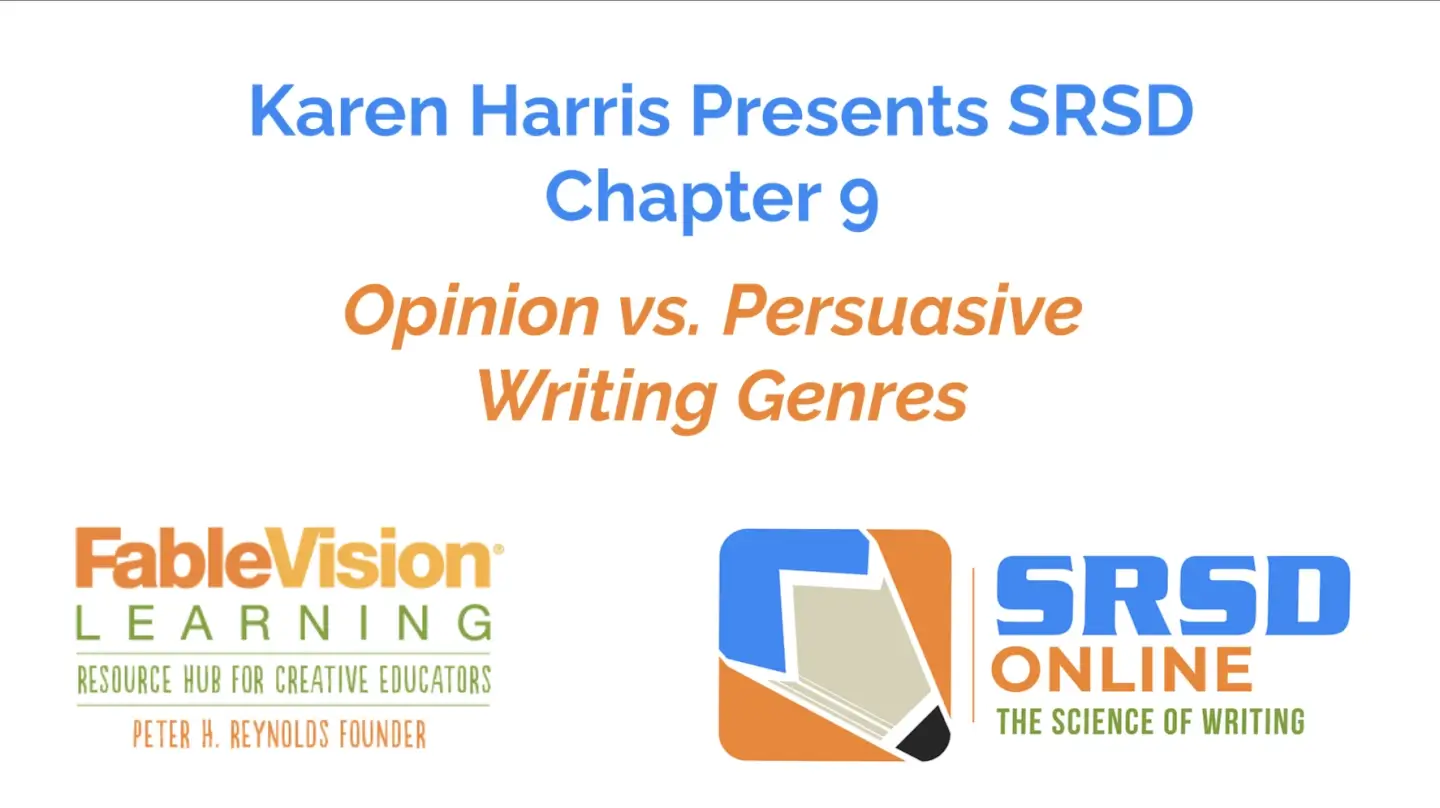
Chapter 9: SRSD Opinion vs. Persuasive Writing Genres
“SRSD Opinion vs. Persuasive Writing Genres” clarifies the difference between opinion and persuasive composition, emphasizing that opinion essays rely on personal beliefs and thoughts. In contrast, persuasive essays involve acknowledging and rebutting...
“SRSD Opinion vs. Persuasive Writing Genres” clarifies the difference between opinion and persuasive composition, emphasizing that opinion essays rely on personal beliefs and thoughts. In contrast, persuasive essays involve acknowledging and rebutting counterarguments and using factual evidence. Karen continues with Sarah and Paige as she explains the difference between the full TREE strategy and a simpler version appropriate for second graders. This approach allows teachers to differentiate instruction according to their student’s capabilities and needs.
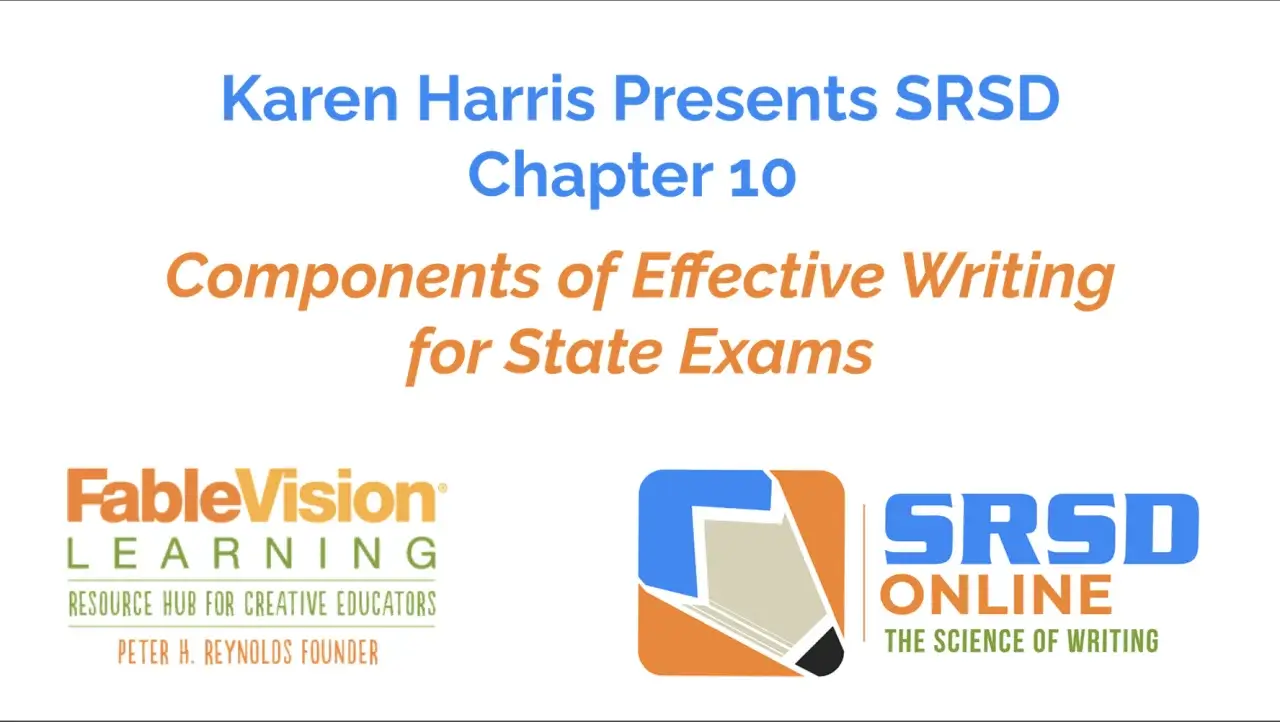
Chapter 10: Components of Effective Writing for State Exams
In “Components of Effective Writing for State Exams,” Karen explains the SRSD approach’s embedded components, focusing on continually considering the topic, audience, and purpose and maintaining a persuasive tone. Students learn to...
In “Components of Effective Writing for State Exams,” Karen explains the SRSD approach’s embedded components, focusing on continually considering the topic, audience, and purpose and maintaining a persuasive tone. Students learn to make effective notes, use linking words, and incorporate “million-dollar words” while crafting strong beginnings and engaging endings. Students build the skills and confidence needed to write, organize, and enjoy the process through collaborative writing and collecting materials in their writing folders.
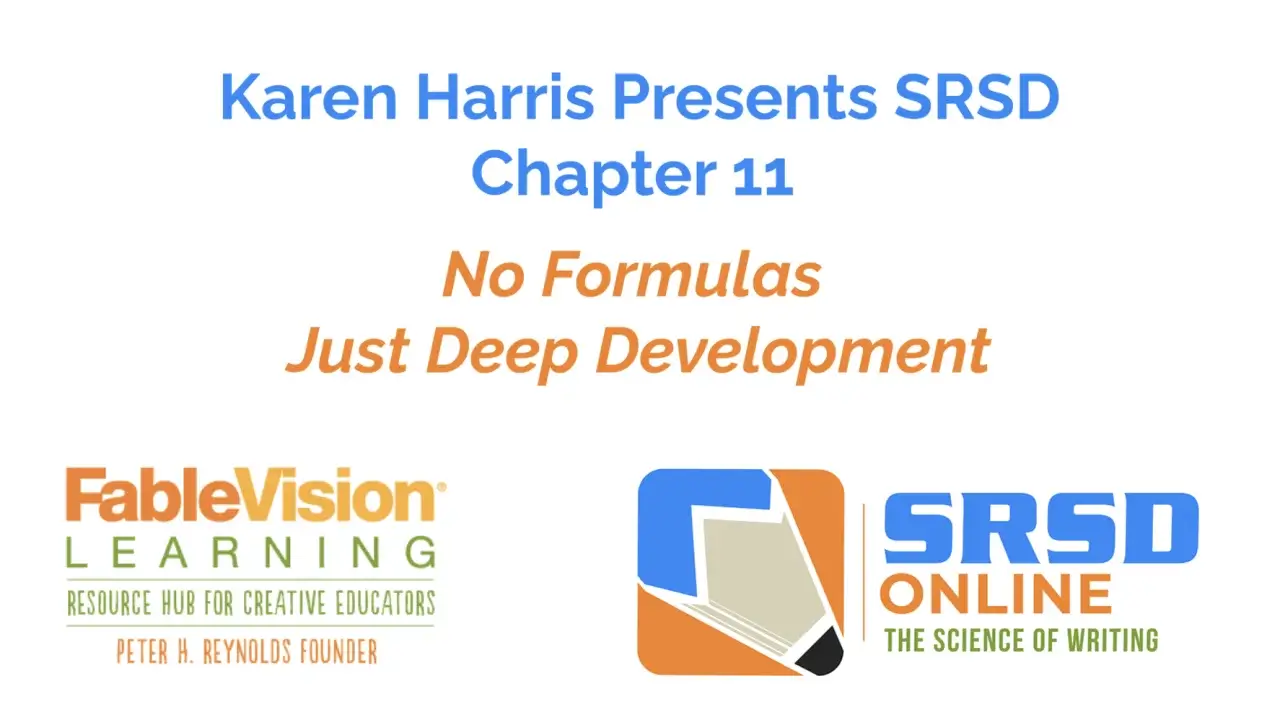
Chapter 11: No Formulas, Just Deep Development
“No Formulas, Just Deep Development” focuses on deeply developing an understanding of the SRSD writing process and the characteristics of good writing, which empowers students as writers. Students gain genre knowledge that...
“No Formulas, Just Deep Development” focuses on deeply developing an understanding of the SRSD writing process and the characteristics of good writing, which empowers students as writers. Students gain genre knowledge that grows over time, enhancing their writing abilities across grades. Additionally, SRSD develops a belief in oneself as a capable writer, teaching students to self-regulate the writing process and their development as writers.
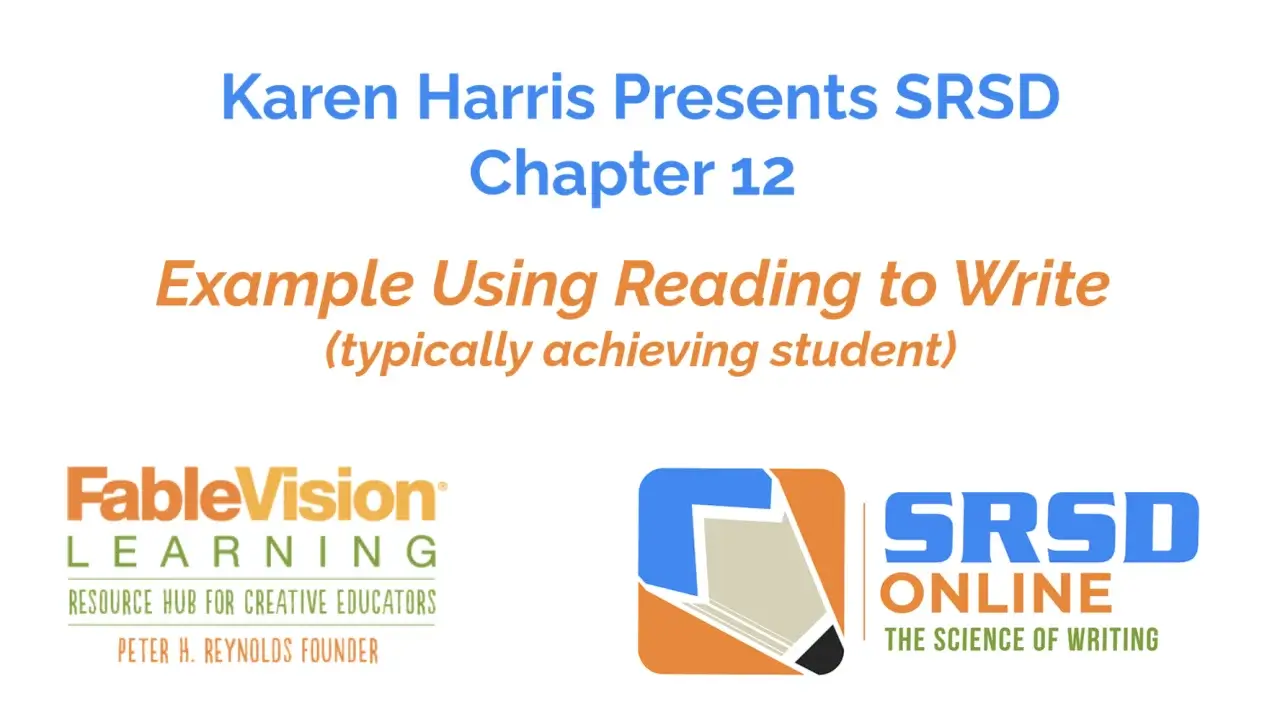
Chapter 12: Example: Using Reading to Write (Typically Achieving Student)
“Using Reading to Write” (Typically Achieving Student) explains how SRSD strategies are validated in writing, reading comprehension, and reading to learn. Karen illustrates this with a 10-year-old who initially struggled with writing...
“Using Reading to Write” (Typically Achieving Student) explains how SRSD strategies are validated in writing, reading comprehension, and reading to learn. Karen illustrates this with a 10-year-old who initially struggled with writing persuasively. After learning the SRSD strategies POW and TREE and the reading comprehension strategy TWA, the student improved significantly in using information from texts to support his persuasive essays. This student developed his ability to plan, organize, and write independently through structured instruction and practice, demonstrating marked progress in his writing skills.
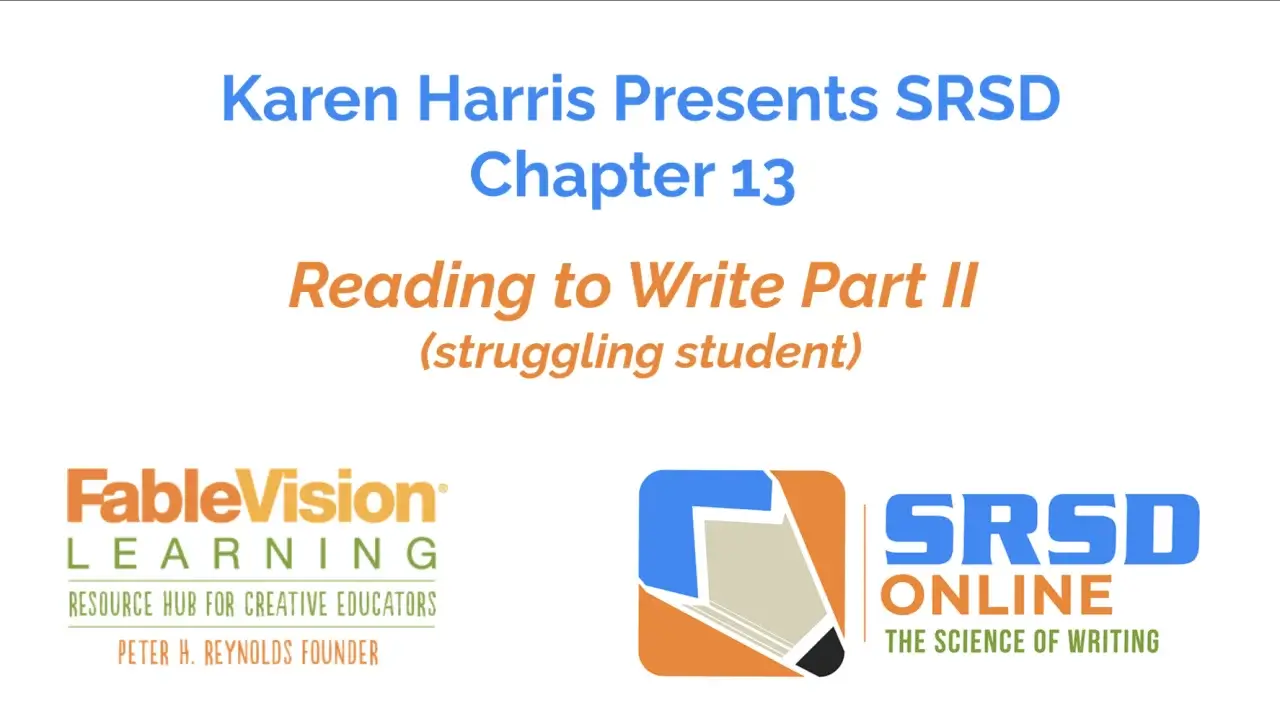
Chapter 13: Reading to Write Part II (Struggling Student)
“Reading to Write Part II” (Struggling Student) introduces a struggling writer who initially scored below the 33rd percentile on a norm-referenced writing test. At the pretest, her persuasive writing consisted of a...
“Reading to Write Part II” (Struggling Student) introduces a struggling writer who initially scored below the 33rd percentile on a norm-referenced writing test. At the pretest, her persuasive writing consisted of a single sentence with minimal use of text. She made significant progress after receiving the same SRSD instruction as others in her class. When Karen asked her to persuade parents about the importance of children wearing bike helmets, this student wrote a more structured essay with clear reasons and explanations. See the results of her next steps, which include editing and revising strategies, using peer planning, and working on paragraph structure.
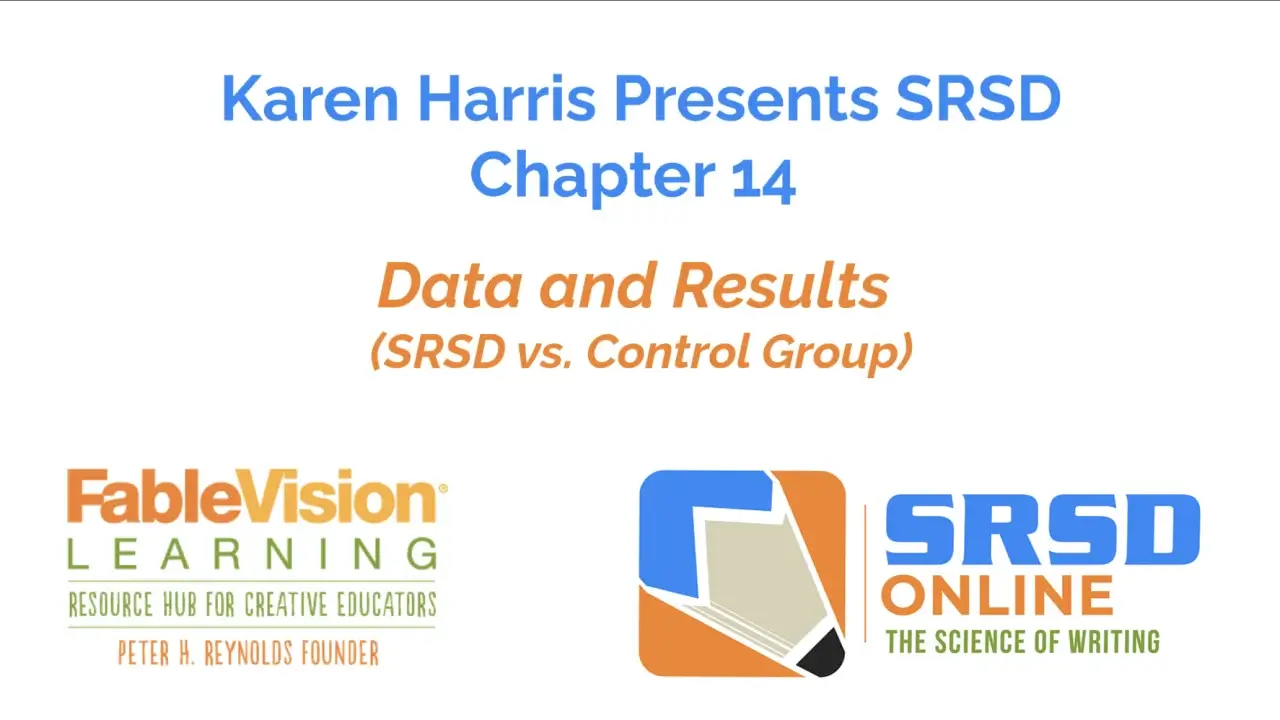
Chapter 14: SRSD Data and Results (SRSD vs Control Group)
“SRSD Data and Results” (SRSD vs Control Group) presents data showing the effectiveness of the SRSD strategies POW, TREE, and TWA in improving planning and writing quality. Students in SRSD classrooms demonstrated...
“SRSD Data and Results” (SRSD vs Control Group) presents data showing the effectiveness of the SRSD strategies POW, TREE, and TWA in improving planning and writing quality. Students in SRSD classrooms demonstrated dramatic increases in quality by the posttest, whereas control classrooms showed little to no improvement. The SRSD instruction also significantly enhanced genre knowledge among students, highlighting the comprehensive impact of SRSD on writing and reading skills
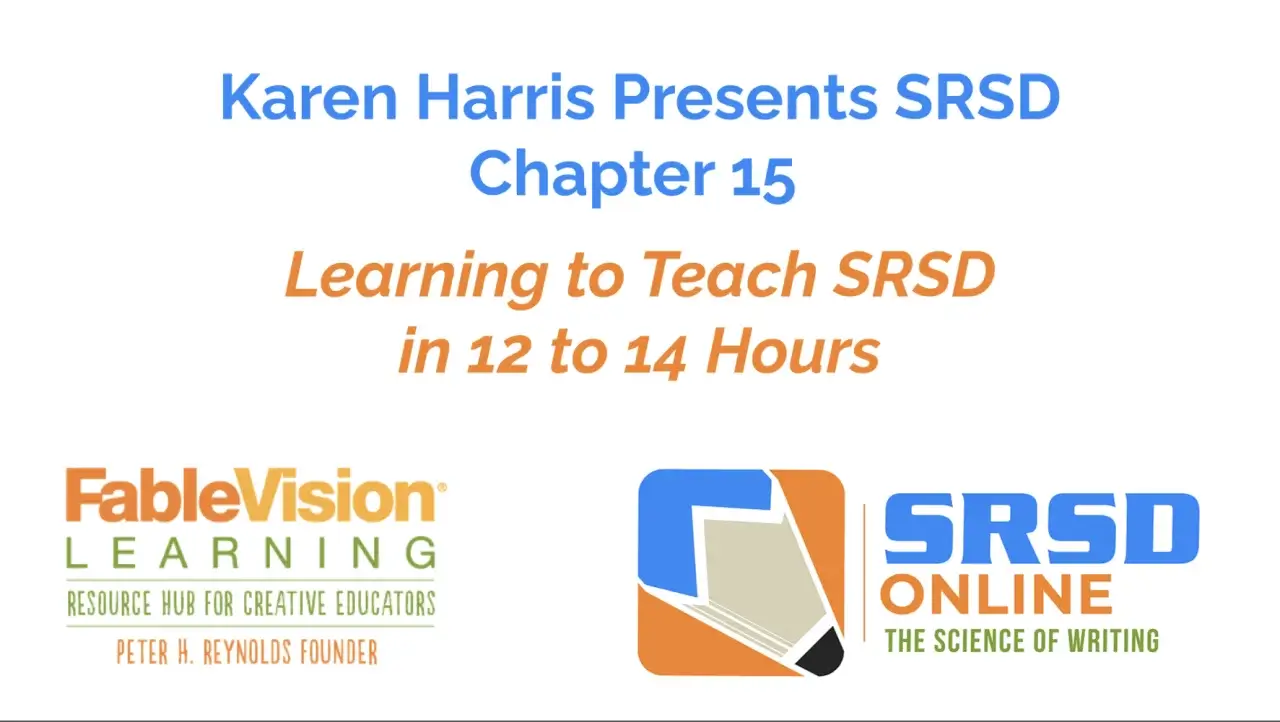
Chapter 15: Learning to Teach SRSD in 12-14 Hours
“Learning to Teach SRSD in 12-14 Hours” acknowledges that mastering SRSD is complex and takes time. Karen emphasizes that while many teachers already use parts of SRSD, few implement the entire approach....
“Learning to Teach SRSD in 12-14 Hours” acknowledges that mastering SRSD is complex and takes time. Karen emphasizes that while many teachers already use parts of SRSD, few implement the entire approach. Effective professional development, modeled after Deborah Ball’s framework, typically requires 12 to 14 hours of hands-on practice spread over a few weeks. Karen points out that while teachers can learn SRSD independently, structured professional development is likely more efficient and effective for mastering this comprehensive instructional approach.
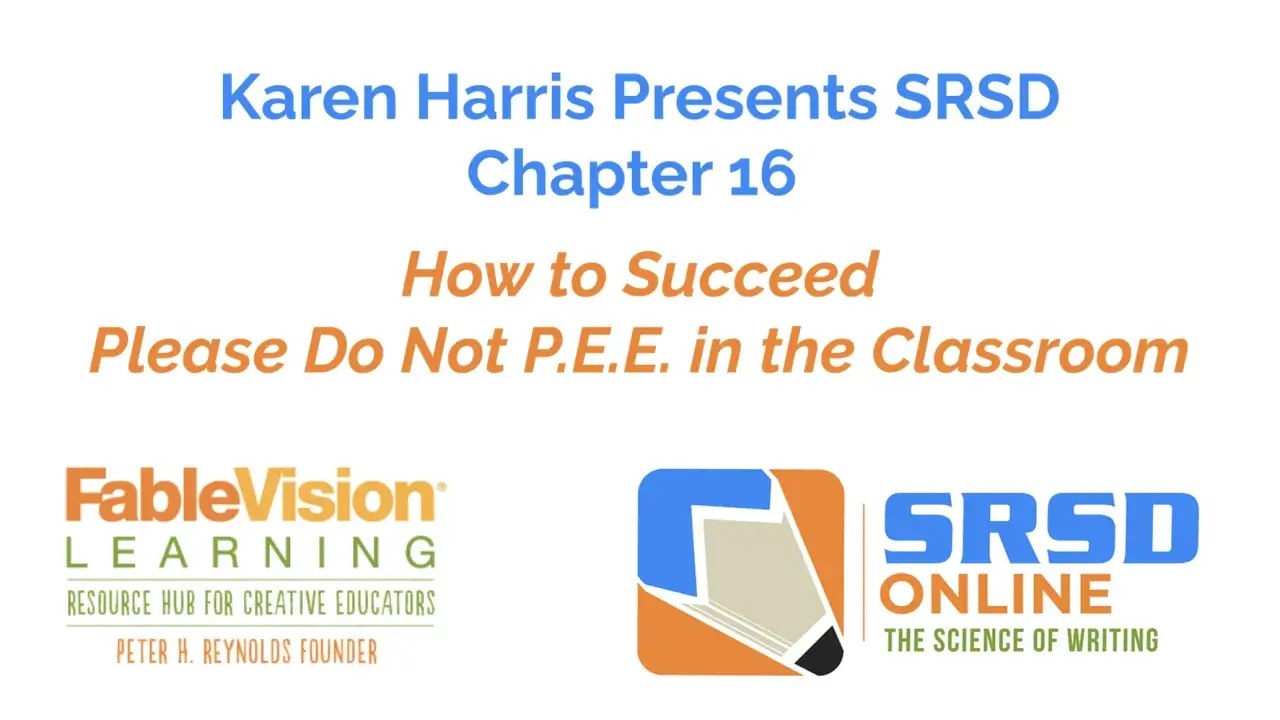
Chapter 16: How to Succeed: Please Do Not P.E.E. in the Classroom
“How to Succeed: Please Do Not P.E.E. in the Classroom” warns that focusing solely on mnemonics will not produce desired outcomes. Karen emphasizes that SRSD is about teaching the writing process, genre...
“How to Succeed: Please Do Not P.E.E. in the Classroom” warns that focusing solely on mnemonics will not produce desired outcomes. Karen emphasizes that SRSD is about teaching the writing process, genre characteristics, and metacognitive modeling and that merely posting and explaining mnemonics, without scaffolded practice and collaborative writing, leads to minimal improvement. Additionally, she emphasizes the importance of comprehensive instruction, including collaborative and peer writing, discussion, evaluation, and revision, to help students write independently and effectively.
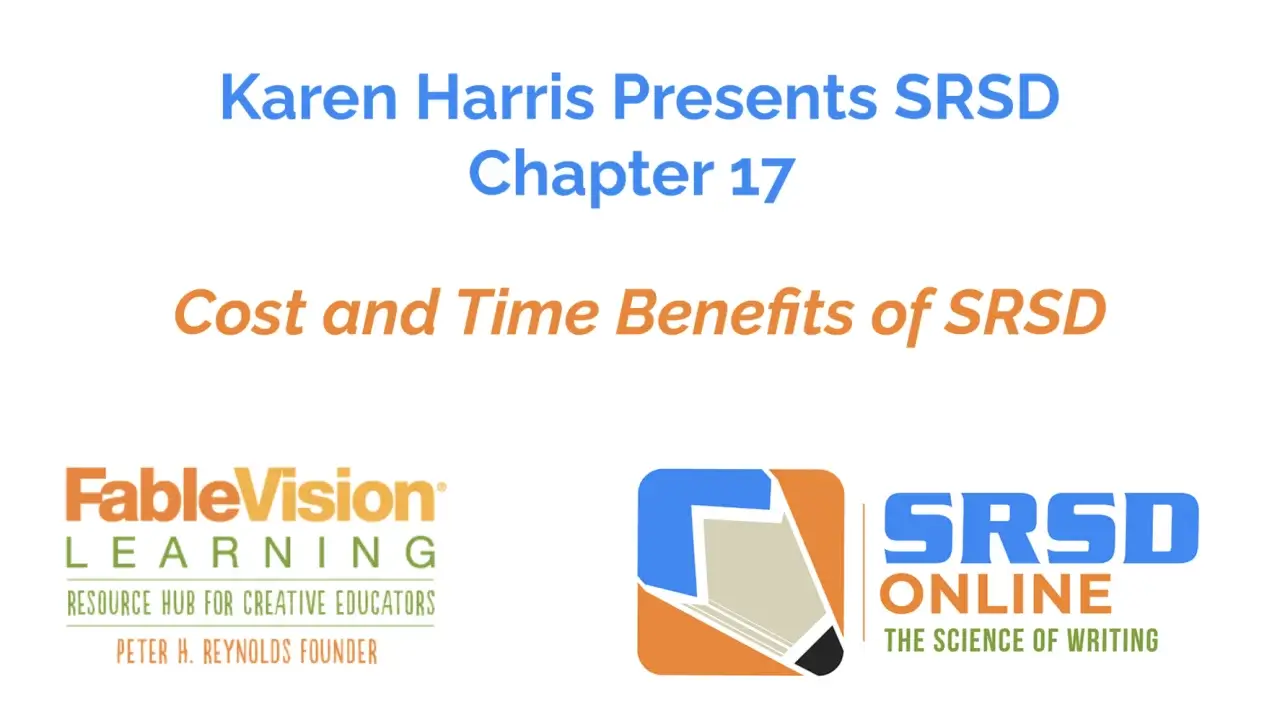
Chapter 17: The Cost and Time Benefits of SRSD
“The Cost and Time Benefits of SRSD” analyzes the cost-benefit of SRSD, explaining that teaching SRSD strategies requires a reasonable investment of 8 to 12 lessons of 20 to 40 minutes each....
“The Cost and Time Benefits of SRSD” analyzes the cost-benefit of SRSD, explaining that teaching SRSD strategies requires a reasonable investment of 8 to 12 lessons of 20 to 40 minutes each. Karen emphasizes that early instruction in these strategies allows for more advanced writing skills in higher grades, enabling students to tackle more sophisticated concepts like counterarguments and rebuttals. She also highlights that students learn subsequent strategies faster and that integrating writing instruction across subjects enhances maintenance and generalization, ensuring a comprehensive and effective approach to teaching writing.
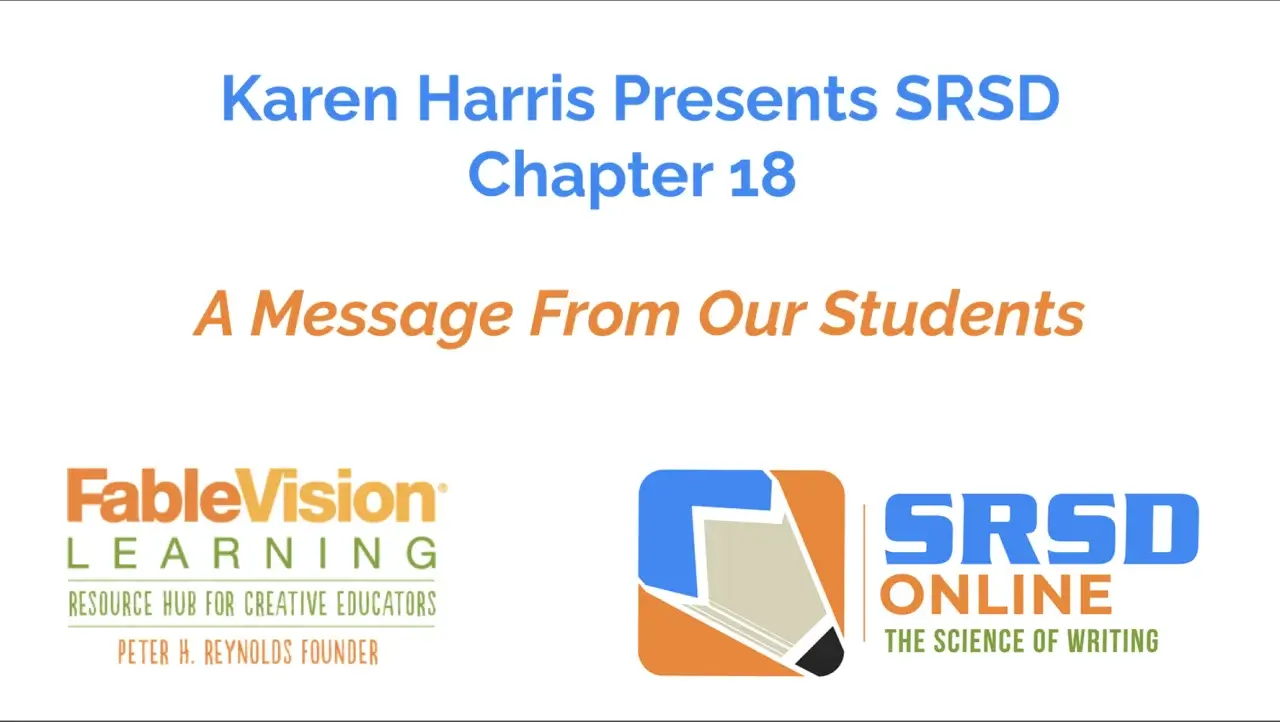
Chapter 18: A Message From Our K-12 Students
“A Message from Our K-12 Students” shares heartwarming feedback from students who have experienced SRSD instruction. Students express their newfound enjoyment and confidence in writing, with one saying, “Finally, I can write,”...
“A Message from Our K-12 Students” shares heartwarming feedback from students who have experienced SRSD instruction. Students express their newfound enjoyment and confidence in writing, with one saying, “Finally, I can write,” and another, “This should be taught to all the children in the world.” Teachers and students report that SRSD makes writing purposeful and engaging, as students sit down with intent and write without hesitation. While not a panacea, Karen notes that SRSD significantly helps develop effective writers by combining sound, evidence-based instructional methods with genre knowledge and writing strategies.





